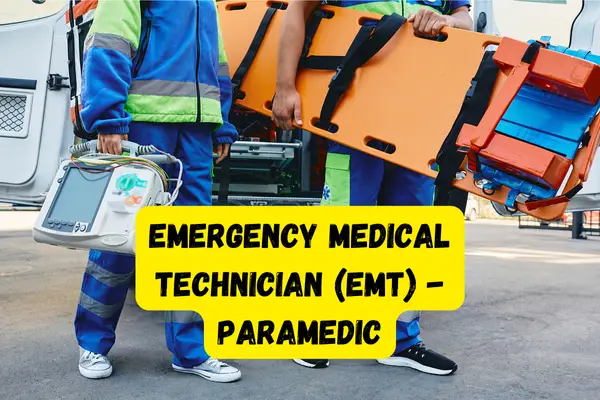If you’ve ever wondered about the difference between an Emergency Medical Technician (EMT) and a Paramedic, you’re not alone. Both are crucial in emergency medical services, but they have different levels of training, skills, and responsibilities. Let’s break it down.
Table of Contents
ToggleWhat is an EMT?
Training and Certification:
- Training Hours: EMTs undergo 120-150 hours of training.
- Certification: They need to pass the National Registry of Emergency Medical Technicians (NREMT) exam to become certified.
What They Do:
- Basic Life Support (BLS): EMTs are skilled in providing essential life-saving care, including CPR, using automated external defibrillators (AEDs), managing airways, and administering oxygen.
- Trauma Care: They handle basic trauma care, such as controlling bleeding and splinting broken bones.
- Patient Assessment: EMTs assess patients, monitor vital signs, and prepare them for transport to medical facilities.
Daily Responsibilities:
- Respond to Emergencies: EMTs are the first to respond to emergency calls, offering critical care and transport.
- Collaborate with Other Medical Professionals: They work closely with paramedics, nurses, and doctors to ensure patients receive the care they need.
What is a Paramedic?
Training and Certification:
- Training Hours: Paramedics receive extensive training, typically between 1,200 and 1,800 hours, often earning an associate degree.
- Certification: They also need to pass the NREMT exam, but at a higher level than EMTs.
What They Do:
- Advanced Life Support (ALS): Paramedics provide advanced medical care, including intubating patients to manage airways, administering IV medications, and performing electrocardiograms (EKGs).
- Cardiac Care: They are trained to manually defibrillate patients and interpret complex cardiac rhythms.
- Advanced Trauma Care: Paramedics handle more severe trauma cases and can administer a wider range of medications.
Daily Responsibilities:
- Lead in Emergencies: Paramedics often take charge during critical situations, making vital decisions about patient care.
- Provide Comprehensive Treatment: They offer more advanced medical interventions compared to EMTs.
- Train Others: Paramedics also mentor and train EMTs and other healthcare professionals.
Key Differences
| Aspect | EMT | Paramedic |
|---|---|---|
| Training Hours | 120-150 hours | 1,200-1,800 hours |
| Certification | Basic NREMT | Advanced NREMT |
| Scope of Practice | Basic Life Support (BLS) | Advanced Life Support (ALS) |
| Skills | Basic airway, CPR, AED | Advanced airway, IV meds, EKG |
| Responsibilities | Basic emergency care | Advanced emergency care |
| Role | Assist and support | Lead and make critical decisions |
Career Path
- Starting Out: Many people begin their EMS careers as EMTs, gaining essential experience in the field.
- Advancing: With further training and experience, EMTs can become paramedics, expanding their abilities and taking on more responsibility.
Both EMTs and Paramedics are essential to our healthcare system. EMTs provide basic, yet crucial, emergency care, while paramedics offer advanced medical support and take on leadership roles during emergencies. Together, they ensure patients receive the immediate care they need when it matters most.
Author
-

My name is Pooja Yadav. I have over 5 years of experience in the tech and tech education industry. I specialize in digital marketing, social media optimization, and helping others learn about technology. I'm passionate about staying up-to-date with the latest trends and sharing my knowledge with others.
View all posts


1 thought on “Emergency Medical Technician (EMT) – Paramedic”